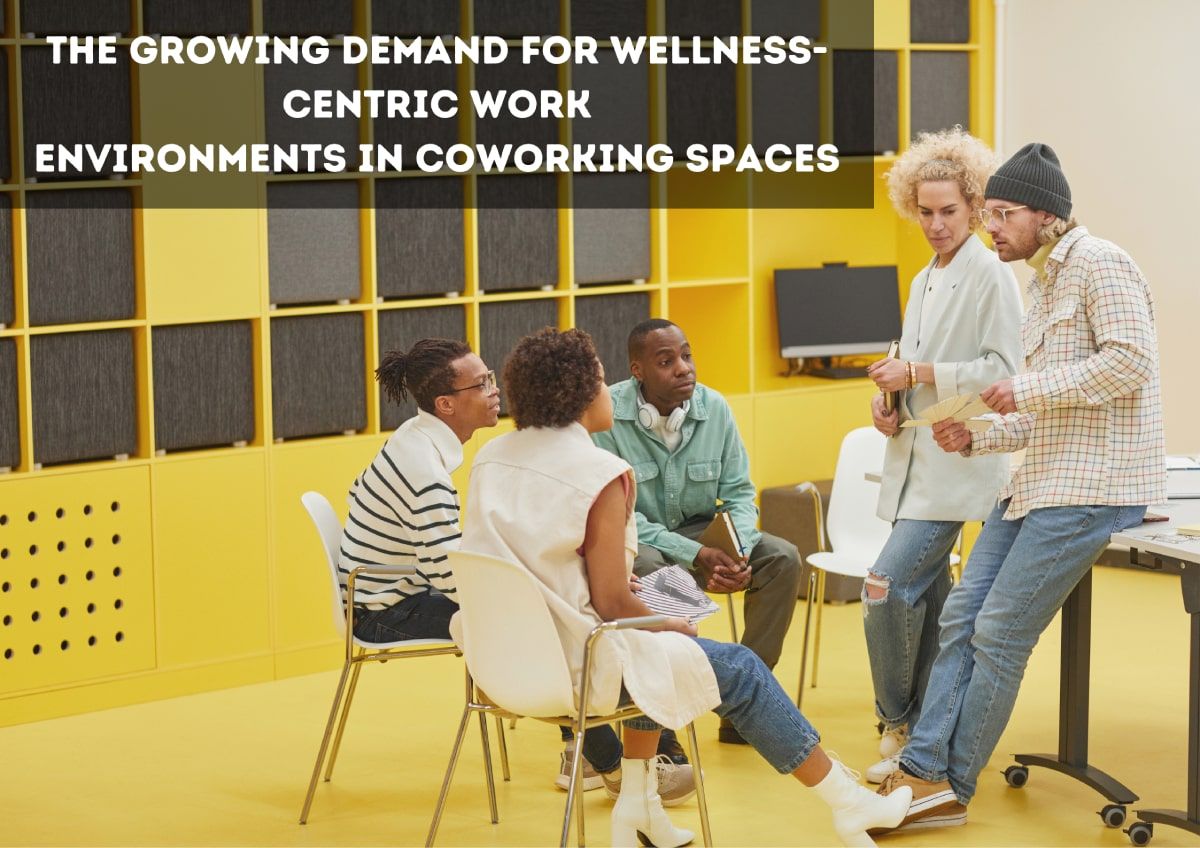The coworking industry is evolving beyond just shared desks and high-speed Wi-Fi. In 2025, one of the most significant trends reshaping coworking spaces is the growing demand for wellness-centric work environments. With increased awareness about mental health, work-life balance, and employee well-being, professionals now seek spaces that prioritize their overall wellness alongside productivity.
This shift is not just a fleeting trend but a necessary adaptation to changing work dynamics, where well-being is seen as critical to professional success. Here’s an in-depth exploration of why wellness is at the forefront of coworking space designs and offerings, and how operators can embrace this demand.
Why Wellness Matters in Coworking Spaces ?
1. Rising Stress Levels in Modern Workplaces
Remote and hybrid work have blurred the boundaries between personal and professional lives, leading to increased burnout and stress. Coworking spaces can play a pivotal role in alleviating this by offering an environment that supports physical and mental health.
2. Increased Awareness of Mental Health
As conversations around mental health normalize, individuals prioritize workplaces that cater to emotional well-being. Features like quiet zones, wellness programs, and flexible working arrangements are no longer optional but expected.
3. Demand for Holistic Work Environments
Workers now seek more than ergonomic chairs and fast internet; they value spaces that nurture creativity, collaboration, and relaxation. Wellness-centric coworking spaces address these needs by creating balanced ecosystems.
Key Features of Wellness-Centric Coworking Spaces
1. Biophilic Design
Biophilic design integrates nature into workspaces, enhancing mental well-being and productivity. Elements like indoor plants, natural lighting, water features, and open layouts create a calming and refreshing environment.
Benefits:
- Reduced stress and fatigue.
- Improved focus and creativity.
- Enhanced air quality and aesthetics.
2. Wellness Amenities
Modern coworking spaces are incorporating amenities that cater to physical and mental health, such as:
- Yoga and meditation rooms.
- On-site fitness centres or partnerships with gyms.
- Healthy snack bars or cafes offering organic, locally sourced food.
- Nap pods or relaxation zones.
Examples:
Spaces like WeWork and Mindspace have introduced wellness rooms and fitness classes as part of their offerings.
3. Ergonomic Workstations
Adjustable desks, supportive chairs, and screen risers are standard in wellness-focused coworking spaces, ensuring that members can work comfortably for extended periods.
Benefits:
- Reduced physical strain.
- Prevention of repetitive stress injuries.
- Increased long-term productivity.
4. Mental Health Support
Some coworking spaces provide access to mental health resources, including:
- Counselling services.
- Stress management workshops.
- Apps or platforms that support mindfulness and meditation.
Examples:
Platforms like Calm and Headspace are being integrated into coworking memberships to promote mindfulness practices.
5. Community and Collaboration
A sense of belonging is crucial for mental well-being. Wellness-centric coworking spaces foster community through:
- Networking events.
- Collaborative workshops.
- Member support groups or mentorship programs.
Benefits:
- Increased job satisfaction.
- Opportunities for personal and professional growth.
The Business Benefits of Wellness-Centric Spaces
1. Attracting a Loyal Member Base
Coworking spaces that prioritize wellness can differentiate themselves in a competitive market, attracting professionals who value holistic well-being.
2. Enhanced Productivity and Creativity
A focus on wellness leads to happier, healthier members who are more productive and innovative, creating a positive feedback loop for the coworking community.
3. Higher Retention Rates
Members are more likely to renew memberships in spaces where they feel cared for and valued.
4. Positive Brand Image
Wellness-centric spaces gain recognition as forward-thinking and socially responsible, which can enhance their reputation and attract partnerships.
Challenges in Implementing Wellness-Centric Features
1. Cost of Investment
Wellness-focused amenities like gyms, biophilic designs, and mental health programs require significant upfront investment.
2. Space Limitations
Smaller coworking spaces may struggle to allocate room for wellness features such as meditation areas or fitness zones.
3. Member Expectations
Balancing diverse wellness needs within a coworking community can be challenging, as different members prioritize different aspects of well-being.
How Coworking Operators Can Embrace Wellness ?
1. Start Small
Begin with simple initiatives, such as providing ergonomic furniture, offering healthy snacks, or organizing regular wellness workshops.
2. Gather Feedback
Engage with members to understand their specific wellness needs and preferences. Use surveys or feedback tools to align offerings with expectations.
3. Partner with Local Wellness Providers
Collaborate with local yoga instructors, therapists, or nutritionists to offer on-demand services without heavy investment.
4. Leverage Technology
Utilize apps to promote wellness, such as booking fitness classes, scheduling quiet time in wellness rooms, or tracking productivity.
5. Focus on Sustainability
Sustainability aligns closely with wellness. Implement eco-friendly practices like recycling programs, energy-efficient lighting, and sustainable building materials.
Case Studies: Successful Wellness-Centric Coworking Spaces
1. The Wing
This coworking space focuses on women’s wellness, offering meditation rooms, lactation spaces, and wellness workshops.
2. Spaces
With biophilic designs, relaxation zones, and wellness events, Spaces integrates well-being into its core operations.
3. The Work Project
Known for its luxurious and wellness-driven design, this space offers ergonomic workstations, greenery, and mindfulness areas.
The Future of Wellness-Centric Coworking Spaces
In 2025 and beyond, wellness will continue to be a driving force in the coworking industry. As more professionals prioritize their health, coworking operators must evolve to meet these expectations. Future trends may include:
- Personalized Wellness Programs: Tailored offerings based on individual preferences and health goals.
- AI-Powered Insights: Tools to track and optimize wellness features based on member usage.
- Hybrid Wellness Spaces: Integrating virtual wellness programs for remote members.
The growing demand for wellness-centric work environments represents a paradigm shift in the coworking industry. By embracing wellness, coworking spaces not only enhance member satisfaction and retention but also create vibrant communities that foster both personal and professional growth. Investing in wellness is no longer optional—it’s a necessity for staying relevant and competitive in the coworking landscape of 2025.
For coworking operators, the message is clear: prioritize wellness to future-proof your business and provide meaningful value to your members.

